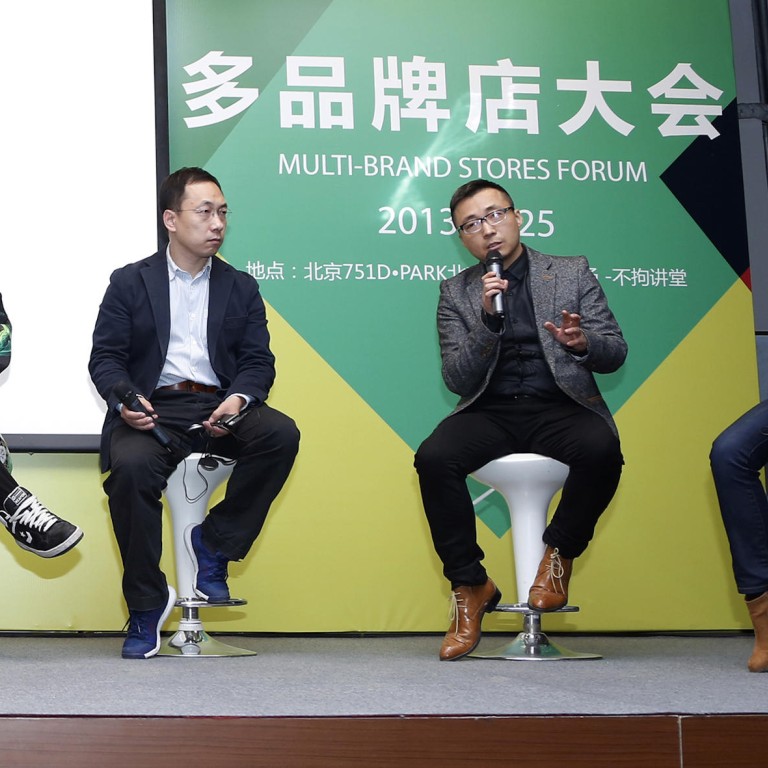
Style Check: Why multi-brand sellers are key to the future of China fashion
Multinational brands dominate the Chinese fashion retail market, with the likes of Nike, Louis Vuitton and Prada holding a vice-like grip in malls and identical-looking main streets.
But Wang Yao, vice-president of the China General Chamber of Commerce, made a hopeful speech to a small crowd at Beijing's 798 Art Zone recently.
He touched on the importance of fashion diversification through department stores and multi-brand retailers during his keynote speech at the forum that I was co-moderating with Nels Frye, Beijing-based editor of LifeStyle Magazine.
As we found out, all is not lost. A new breed of cool, multi-brand retailers have emerged in China in recent years, bringing support and local variety to the industry. And they're not just overseas imports such as Lane Crawford, I.T and Galeries Lafayette.
Good examples are forum panelists Jiang Ming, owner of the stylised Waterstone boutiques (stocking vintage, edgy Japanese and Chinese labels), and Xu Wei, senior operations director of Seven Days (a cutting-edge design incubator for Chinese labels). Both reported steady growth in sales and increased recognition among fashion followers in China. Basically, the role these retailers are playing is similar to Arnault Castel's Kapok in Hong Kong, but with a larger scope in the mainland market.
It's these retailers that will be key to developing a cult indie fashion scene in China. But this movement is still in its genesis (in Hong Kong, also) for many reasons, including high rents and greedy property developers. Well-curated multi-brand stores (such as Colette in Paris, Browns Fashion in London, Hong Kong's I.T and Milan's 10 Corso Como) are key to developing consumer sophistication and introducing healthy variety and competition. International giants such as Lane Crawford also have a role to play but are notoriously shy about stocking local brands - even at Lane Crawford's new 150,000 sq ft Shanghai store that opened last month, our reporter counted only a handful of China-based brands - the first to be sold by the retailer.
The evolution of the mainland's fashion landscape is a tough one to tackle, and retail monopolies of mono-brand stores are a pressing issue that the forum organisers wanted to address. The forum ran at 798 during the Chic Young Blood fashion fair - a showcase for younger, contemporary and sportswear labels and indie designers that held court alongside the Mercedes-Benz China Fashion Week.
The success of independent, smaller labels largely depends on the success of the multi-brand retailers that stock them, so the onus is on not only the store owners, or the brands, but also on businesses and governmental bodies to show support (both financial and structural) to make spaces for creativity - like the initiatives that have served New York and London fashion so well.
The onus is also on consumers in the choices we make. This is how fashion subcultures are shaped - we often forget how much power we hold as buyers.
Perhaps it's time to put our money where our mouths are and shift our spending habits, instead of complaining about how every Chinese mall looks exactly the same.

